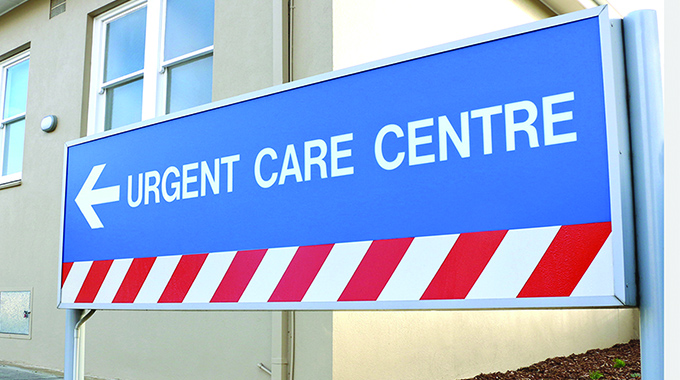Building a healthier tomorrow: The strategic importance of acute care centres in Zimbabwe

Jacqueline Ntaka
ACUTE care, the branch of secondary health care dedicated to providing short-term treatment for urgent medical conditions or during recovery from surgery, is a cornerstone of modern health systems. It stands in contrast to chronic care, focusing on immediate, active treatment rather than long-term management. The establishment of acute care centres across Zimbabwe’s 10 provinces could mark a transformative step in the nation’s healthcare landscape.
The benefits of acute care hospitals are manifold. They serve as critical hubs for saving lives and preventing disability, especially in cases of severe injury or sudden illness. With state-of-the-art intensive care units and advanced surgical facilities, these centres ensure that patients receive the necessary care without delay. Moreover, acute care hospitals are often equipped to provide specialised services that are not available in smaller, local clinics, thereby elevating the overall standard of healthcare.
Countries like the United Kingdom and the Netherlands have demonstrated the effectiveness of acute care systems. In the UK, despite challenges such as crowding in emergency departments, the system has various access points and specialised units to manage acute conditions effectively. The Netherlands, with its gatekeeping general practitioners and high admission rates, shows the importance of organised acute care in managing an aging population with complex health needs.
The acute care centres market is experiencing growth driven by the increasing prevalence of chronic diseases, a growing geriatric population, and a rising demand for specialised medical services. The Covid-19 pandemic further accentuated the importance of these centres in managing emergency cases. This growth momentum is further propelled by the increasing demand for quality healthcare services, prompt medical interventions and the ability to cater to diverse patients’ needs. To remain competitive, healthcare organisations must continually assess the ever-evolving dynamics of the acute care centres market and adapt their strategies accordingly, ensuring the provision of exceptional care and maintaining a lucrative growth trajectory.
Disruptive and hybrid technologies are playing a significant role in acute care. Innovations like artificial intelligence (AI), robotics, precision medicine, 3-D printing, augmented reality/virtual reality, genomics and telemedicine are being integrated into care delivery to improve efficiency and patient outcomes. AI is enhancing critical care medicine by aiding in disease identification and management. It helps in analysing complex data to anticipate patient deterioration and supports decision-making for timely interventions. Robotics in emergency settings is being explored for its potential to perform surgeries with precision and to support remote telementoring and telesurgery, especially for haemodynamically stable patients.
Precision medicine in acute care is tailoring treatments to individual genetic profiles, improving diagnostics and prognostics for conditions like bowel ischemia and pancreatitis and enhancing critical care management. 3-D printing involves creating patient-specific implants and prosthetics, as well as anatomical models that assist surgeons in complex procedures, thereby improving surgical outcomes and patient recovery. Augmented reality/virtual reality technologies are being used to overlay medical images onto patients during operations, treat conditions like PTSD and provide immersive rehabilitation therapies to improve physical functions post-stroke or other medical conditions.
Genomic testing is providing rapid diagnosis for critically ill infants with suspected genetic conditions, leading to timely and potentially life-saving treatments while telemedicine is expanding the delivery of specialty acute care, offering remote specialist care and supporting home monitoring post-hospitalisation, thus becoming a standard part of care delivery.
All these technologies are not only improving the efficiency and outcomes of acute care, but are also making healthcare more accessible and personalised.
In the context of Zimbabwe, establishing acute care centres could significantly improve healthcare outcomes. These centres would provide a structured approach to emergency care, reducing the burden on existing facilities and ensuring that patients receive timely and appropriate treatment. They would also serve as training grounds for healthcare professionals, fostering a new generation of skilled practitioners equipped to handle acute medical situations.
The ripple effects of such an initiative would extend beyond immediate health benefits. Acute care centres can become beacons of excellence, attracting investment and improving the country’s healthcare infrastructure. They would also act as a safety net for the most vulnerable, ensuring that no one is left behind in times of medical crisis.
The establishment of acute care centres in Zimbabwe is not just a necessity, but an opportunity to leapfrog into a future where healthcare is accessible, efficient and responsive to the needs of its people. It’s a chance to build a system that not only heals, but also empowers and uplifts the nation’s health standards to new heights.
Jacqueline Ntaka is the CEO of Mviyo Technologies, a local tech company that provides custom software development, mobile applications and data analytics solutions. She can be contacted on [email protected]








Comments